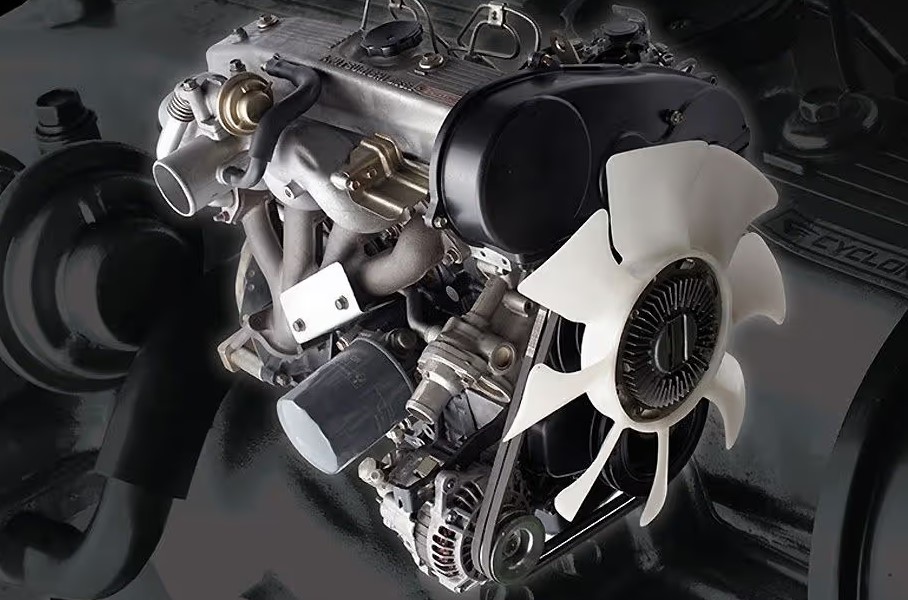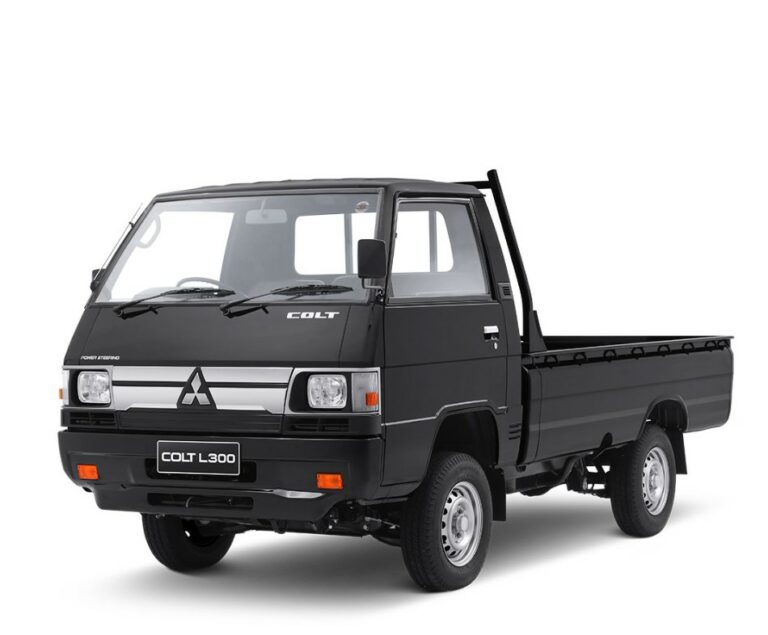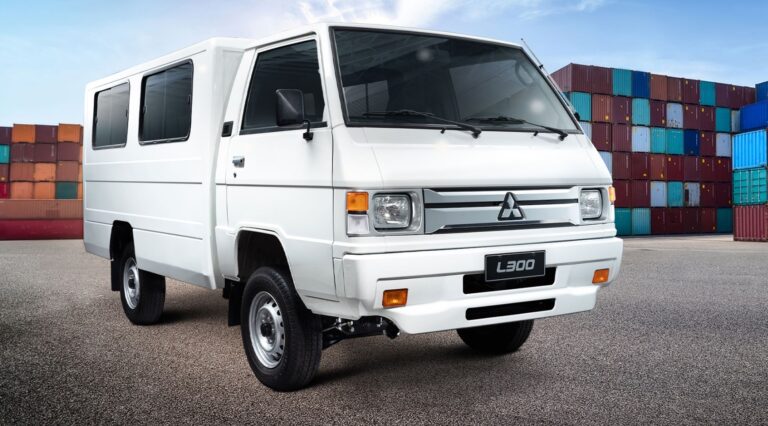2027 Mitsubishi L300 Review, Specs, Dimensions
2027 Mitsubishi L300 Review, Specs, Dimensions – The 2027 Mitsubishi L300 is back, and it’s more than a nostalgic nod—it’s a complete redesign that blends the model’s historic durability with forward-thinking engineering. While the boxy silhouette remains true to its utilitarian roots, everything else has been reimagined. Mitsubishi has updated the L300 with a new ladder-frame chassis, stronger crossmembers, and revised suspension geometry to support heavier loads and more dynamic driving. This platform revamp delivers better handling, increased safety, and longer durability in harsh commercial environments. 2027 Mitsubishi L300 Review
2027 Mitsubishi L300 Redesign and Update Plan
Exterior & Interior
The exterior look of the 2027 Mitsubishi L300 balances function with flair. While the van keeps its unmistakable flat-nose front, it’s now framed by slim LED DRLs and reshaped projector beams tucked into black bezels. Side mirrors are bulkier and heated, optimized for wider angles. The commercial-grade steel wheels now come with optional alloy upgrades, while reinforced side panels help reduce exterior dings in urban settings. Mitsubishi also introduces new color options like Glacier White, Iron Gray, and Fleet Blue, aimed at both private and business buyers.
Inside the cabin, Mitsubishi moves the L300 lightyears ahead of its predecessor. The dashboard now features a more symmetrical layout with a centrally mounted 10-inch infotainment screen supporting wireless Apple CarPlay and Android Auto. The digital instrument cluster is basic on entry trims but more advanced on higher-spec variants, offering customizable views for fuel, navigation, and vehicle diagnostics. Sound insulation has been vastly improved, cutting down engine and wind noise even at high speeds, which used to plague older L300s.
Seating capacity ranges from three in the cab version to 15 in the extended passenger variant. The new seats are firmer and contoured with bolstered sides for more support on long drives. Storage is everywhere—under the seats, above the windshield, and in the center console. Rear passenger variants include air vents, LED cabin lighting, foldable tray tables, and USB-C charging ports for all rows. It’s clear Mitsubishi wants the 2027 L300 to do more than just haul; it’s engineered to move people in comfort.
What’s immediately noticeable is the cleaner and more aerodynamic exterior design. The 2027 L300 features smoother body lines and a more modern fascia, integrating LED headlights, updated grille slats, and a high-mounted front bumper to enhance visibility and clearance. Roof rails are standard on higher trims, and side access has been improved with a lower step-in height and dual sliding doors. The cargo van variant gets wider-opening rear barn doors, while the passenger version receives larger windows with better UV protection.
Mitsubishi’s redesign strategy also includes expanding body styles. The L300 will be available as a cargo van, a minibus, a chassis cab, and a crew cab. Each configuration benefits from modular hardpoints and customizable roof heights, appealing to commercial fleets and small business owners alike. From fleet couriers to shuttle operators, the 2027 L300 is ready to adapt with body-on-frame toughness and car-like maneuverability.
2027 Mitsubishi L300 Specs
Engine & Performance
Mitsubishi keeps things practical under the hood with two powertrain choices tailored to business efficiency and reliability. The standard engine is a naturally aspirated 2.4-liter four-cylinder gasoline unit making 148 horsepower and 168 lb-ft of torque. It’s paired with either a 5-speed manual or a 6-speed automatic transmission, depending on trim and application. This setup is tried-and-true, easy to service, and perfect for businesses operating in regions with limited parts availability.
For more demanding commercial use, Mitsubishi introduces a 2.2-liter turbo-diesel engine sourced from the Triton pickup, producing 170 horsepower and 280 lb-ft of torque. It’s designed with fuel economy and torque in mind, especially when fully loaded. This engine will be paired with Mitsubishi’s new 8-speed automatic and optional rear-wheel-drive or four-wheel-drive layouts. With a maximum payload capacity of up to 2,200 lbs and towing up to 5,000 lbs, the L300 becomes a true workhorse for urban and rural logistics.
Handling and ride quality have seen dramatic improvements thanks to a new front independent suspension and solid rear axle with updated dampers. Whether navigating tight city corners or rough provincial roads, the L300 now feels more composed and less harsh. Brake upgrades include ventilated front discs and drum rears with ABS and EBD as standard. On the diesel variant, hill start assist and descent control are also added for better control in off-road or steep loading zones. 2027 Mitsubishi L300 Review
2027 Mitsubishi L300 Fuel Economy
Fuel efficiency is another area where Mitsubishi delivers real-world improvements. The gasoline model achieves 24 MPG combined, while the turbo-diesel variant pushes up to 30 MPG on highway routes—excellent figures for a vehicle in this segment. Mitsubishi has also tuned the stop-start system on city trims to reduce idle fuel consumption and introduced regenerative braking on the diesel to slightly recharge auxiliary systems and reduce alternator load.
2027 Mitsubishi L300 Safety Features
Safety is one of the most significant leaps forward for the 2027 Mitsubishi L300. What used to be a barebones setup now comes with a comprehensive suite of standard and optional systems. All trims include dual front airbags, ABS, traction control, and electronic stability control. Higher trims and passenger versions get side curtain airbags, rear parking sensors, and a rear-view camera integrated into the infotainment display for easier maneuvering.
Advanced driver assistance systems (ADAS) are now available for the first time in an L300. The Executive and Premium trims come equipped with forward collision mitigation, lane departure warning, and driver fatigue detection. A newly introduced “Urban Shield” package adds blind spot monitoring and a 360-degree camera system, essential for large fleet operators navigating city environments. The passenger version also features child-lock mechanisms, ISOFIX anchors, and emergency exit signage for safety compliance.
Structural improvements have been key to enhancing safety. The new frame uses higher tensile steel in critical zones, side impact bars, and energy-absorbing crumple zones to meet modern crash test standards. Mitsubishi engineers have worked with regional crash labs to ensure the L300 passes NCAP assessments in Asia-Pacific and Latin American markets, making it suitable for a truly global deployment.
2027 Mitsubishi L300 Release Date & Price
Pricing will start at $23,500 for the base cab-chassis variant with manual transmission. The mid-level crew cab and short-wheelbase passenger models fall in the $26,000–$29,000 range, while the high-roof, long-wheelbase L300 Premium tops out around $33,000 when equipped with the diesel engine and full safety suite. Mitsubishi also offers fleet discounts and factory customization packages for logistics, medical, and school transport applications, giving businesses added value.
The official global debut is expected in late 2026, with units reaching showrooms by Q1 2027. Mitsubishi will prioritize key markets like Southeast Asia, the Middle East, and South America initially, followed by limited availability in left-hand-drive markets such as Mexico and select African countries. Production will take place in the Philippines and Thailand, with expansion plans based on demand. Pre-orders for fleet buyers will open in October 2026, accompanied by incentives like free maintenance for the first two years or discounted fleet servicing contracts. 2027 Mitsubishi L300 Review




